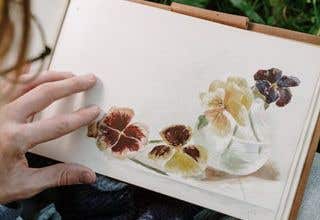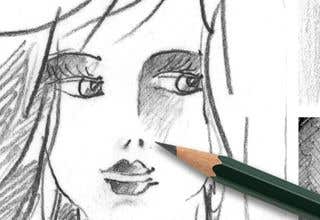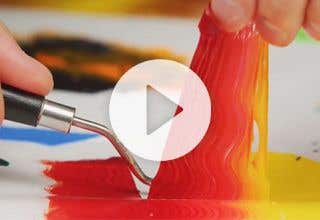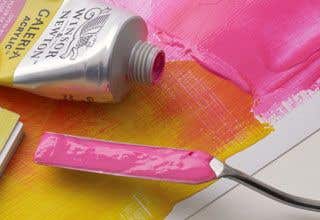At Eckersley’s we often get asked about what the letters and numbers on our pencil ranges mean! If you’re just getting started with drawing and sketching, you might be wondering too, so let us help you make sense of it all.
What are pencil grades?
Pencil grades are the letters and numbers you’ll often see on the end of a pencil, for example HB or 2B. These grades help artists and illustrators know how hard (or soft!) and how dark (or light!) a graphite pencil is.
The H in pencil grades stands for hardness, and the B stands for blackness. The harder a pencil lead is, the lighter the lines they produce will be. Conversely, softer leads make darker marks, and thus fall into the ‘B’ side of the HB Graphite Scale.
Graphite pencil cores are made from a mix of graphite and clay filler. The more clay filler that’s used in a lead, the harder it is and the lighter the mark made will be. In terms of pencil grades, this means that the higher the number is before the ‘H’, the more clay filler the lead includes and thus the lighter the mark made will be. Conversely, the higher the number is before a ‘B’ grade of pencil is, the darker and softer its lead is.
What do the pencil grades mean?
Most modern pencils use the HB Graphite Scale, and are given a grade to indicate the level of hardness.
The grades run from 9H, the softest and lightest lead, through to 9B which is the darkest lead. You will also see an ‘F’ rating that sits between H and HB on the scale, this is a hard pencil that maintains a fine point.
HB sits in the middle of the scale, which is why you’ll often see this grade of pencil used in schools or for general use.

What are the different grades best for?
The higher numbered H pencils (9H-5H) are very light, and an excellent choice for making sketches when painting with watercolours or lettering. This is because they leave lighter marks and thus won’t show through the watercolour paints as clearly as a darker lead would.
The next group of H pencils (4H-2H) are excellent for drawing outlines, making light sketches and guidelines, or for technical drawing. They are dark enough to see clearly but light enough to lift easily or trace over.
The mid-range grades (H, F, HB, and B) are the grades you are most likely to have come across in schools or offices. They are a popular pencil that are best for writing and simple sketches. They’re versatile as they are dark enough to write and draw clearly, but still hard enough to have minimal smudging when used.
The B graded pencils are ideal for shading or creating gradually darkening tones in pencil artworks, helping to build a sense of 3D form in the work. This is due to their softer texture laying down darker marks. As you move into the higher B grades, you’ll find the pencil lead is excellent for smudging and blending techniques in your art.
It’s that simple!
Once you know how the pencil grades work, it’s simply a matter of finding your favourite style of sketching and art techniques, then choosing the grade that will best suit your needs. Many standard pencil sets will include pencils in the middle of the HB Graphite Scale, and are a great place to start getting used to how each pencil grade lays down lines.
Eckersley’s has a wide range of drawing pencils on offer, so you can get started on your sketches and illustrated artworks! Check out our pencil range on our online store, or visit one of our retail stores across Australia to pick up your pencils today and get creating!












